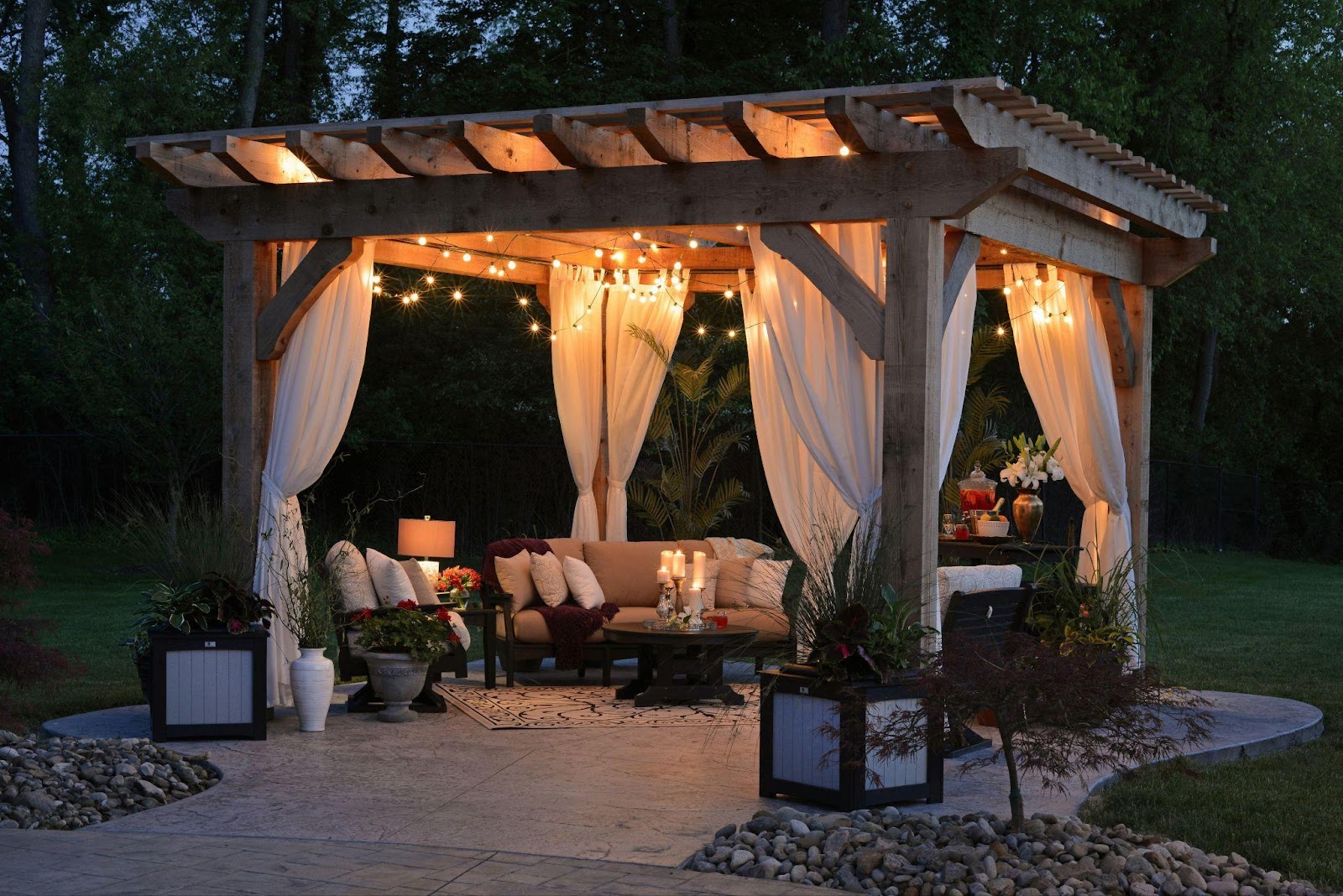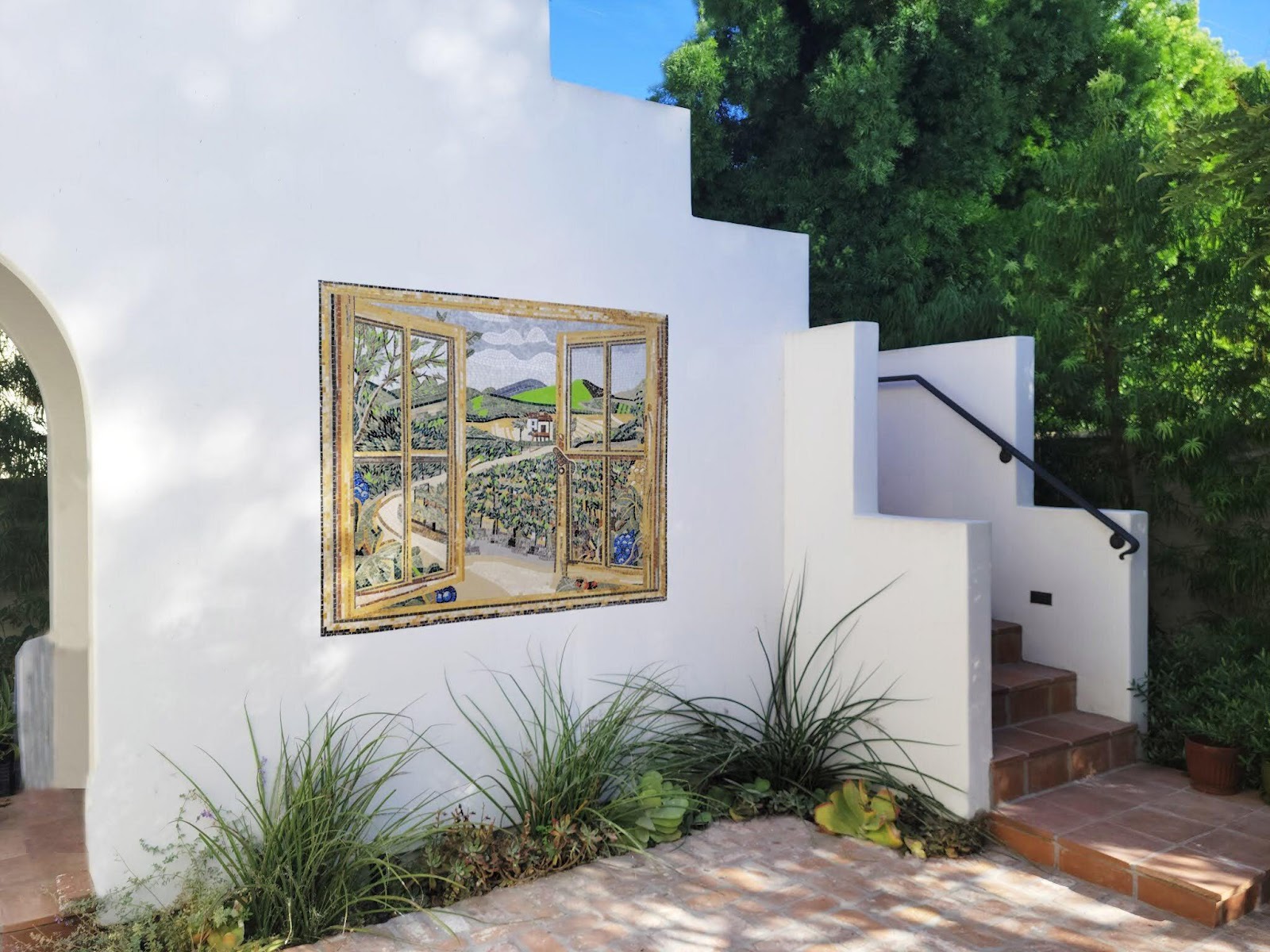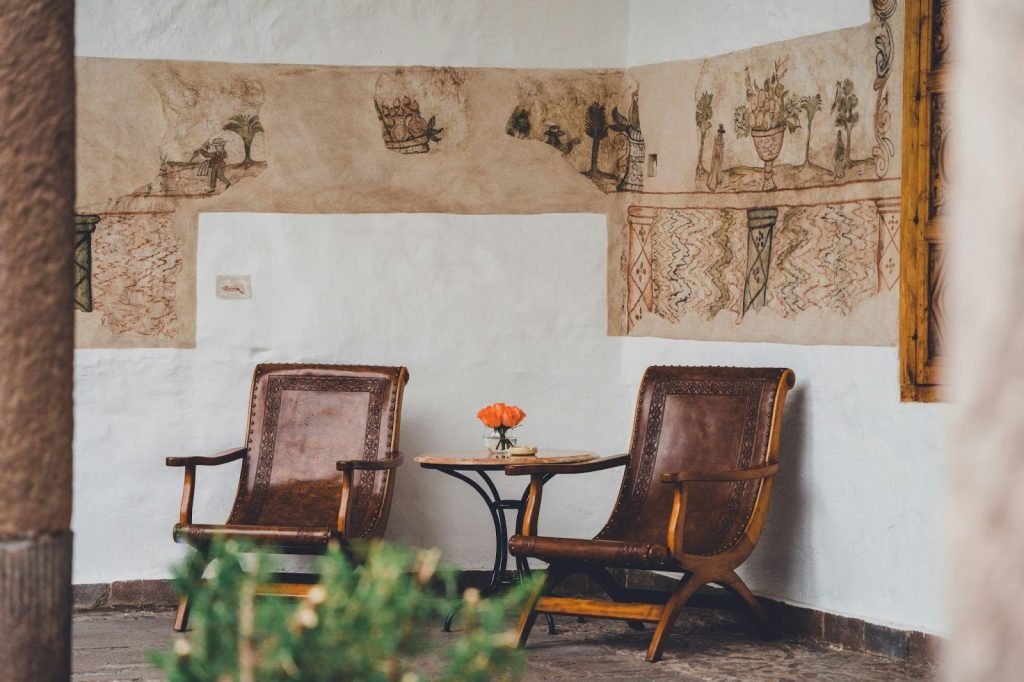There was a time when the garden patio was seen as a summer indulgence: a place for barbecues, weekend lounging, and evening drinks under fading light. Once the autumn chill set in, furniture was covered, cushions were stored, and the space fell silent until spring’s return. But as modern homeowners increasingly value their outdoor environments as extensions of the home itself, the patio has evolved into something far more enduring: an all-season retreat that blends comfort, beauty, and practicality throughout the year.
Designing a patio that thrives in every season means thinking beyond surface aesthetics. It’s about crafting an adaptable, layered environment that welcomes warmth in winter, shade in summer, and color in every month between. It’s about building atmosphere, a living rhythm that changes with the weather but never goes dormant.
Designing for Flexibility and Flow
The foundation of any year-round patio lies in flexibility. Spaces designed for a single season tend to feel static and underused, but flexible layouts evolve gracefully with the seasons. Start by considering the movement between indoor and outdoor zones. The most successful patios function as transitional extensions of the home, with materials and colors that create visual harmony between the interior and exterior.
Stone or porcelain tiles that echo indoor flooring can create continuity, while large glass doors dissolve barriers altogether. This continuity encourages use even in cooler months, as the patio feels like a natural continuation of the living room rather than a detached outpost.
Furniture selection also plays a critical role in adaptability. Modular seating allows reconfiguration to suit the occasion or the weather. A corner sofa may wrap snugly around a fire pit in winter but open out into a relaxed sunbathing arrangement by July. Investing in weather-resistant materials ensures durability, while layers of cushions and textiles invite comfort that can be adjusted seasonally.
Weatherproofing with Style
The success of a four-season patio depends as much on protection as it does on presentation. Shade structures, overhead covers, and windbreaks provide essential shelter without compromising beauty. Pergolas remain a timeless choice, but modern homeowners often favor versions that incorporate retractable canopies or louvered roofs. These adjustable systems allow full sunlight on bright winter mornings and complete coverage from midsummer sun or autumn drizzle.
Glass or acrylic panels can be added to one or more sides to create subtle enclosures. They block wind while preserving an open, airy feel. Curtains made from outdoor-rated fabrics serve a similar function, lending a sense of intimacy while softening hard architectural lines.
Lighting, too, should be considered as part of the weatherproofing equation. Hardwired fittings that withstand temperature extremes will provide dependable illumination year-round. Soft ambient light from string bulbs or integrated LED strips transforms the patio into an inviting sanctuary long after dusk falls, whether in June or January.
Comfort in the Cold
Perhaps the greatest challenge of year-round outdoor living is maintaining warmth in cooler weather. Yet with thoughtful design, a patio can become as inviting on a frosty evening as it is on a summer afternoon. Fire features remain the most emotive option. The flicker of flames offers not only heat but also an irresistible focal point.
Gas fire tables provide clean, controllable warmth ideal for urban patios, while wood-burning fire pits offer sensory pleasure with their crackle and scent. For covered spaces, outdoor-rated electric or infrared heaters can be integrated discreetly into ceilings or walls, delivering instant comfort without visible clutter.
Soft furnishings enhance this warmth through texture and color. Think layered throws in wool or faux fur, deep outdoor cushions, and rugs made from weatherproof fibers that mimic the tactility of indoor textiles. These elements can be changed seasonally, with warmer hues for autumn and winter giving way to brighter, sunlit tones for spring.

Shade and Cooling in Summer
Just as warmth defines winter comfort, shade is the cornerstone of summer livability. When temperatures rise, an effective cooling strategy ensures that the patio remains a pleasure rather than a punishment. Trees, vines, and greenery are the most natural solutions. A mature deciduous tree provides dense shade when it’s needed most, yet allows light through bare branches in winter.
Pergolas can be draped with climbing plants such as wisteria or jasmine, adding fragrance and a romantic softness. Alternatively, lightweight shade sails or retractable awnings can be adjusted with the seasons. Water features contribute not only sound and movement but also a subtle cooling effect through evaporation.
Furniture arrangement is also key. Orient seating away from direct sunlight, and use planters or screens to create natural barriers that diffuse glare. Materials such as rattan and light-toned woods stay cooler to the touch, enhancing comfort on the hottest days.
Planting for All Seasons
A truly year-round patio feels alive in every month. Achieving this means selecting plants that perform sequentially, so there is always something to catch the eye. Evergreen structure anchors the design: think boxwood spheres, dwarf conifers, or ornamental grasses that retain their shape through frost. Around these, layer perennials and shrubs that take turns in the spotlight.
Early spring might see hellebores and tulips bloom, followed by the lush abundance of summer hydrangeas and salvias. Autumn brings ornamental grasses and late-blooming asters, while winter’s calm can be punctuated with the sculptural forms of seed heads, bare branches, and the subtle beauty of frost catching on leaves. Container planting offers additional flexibility. Pots can be rearranged, refreshed, or protected according to season.
Building Layers of Light
Light defines mood, and for patios that serve every season, it’s the thread that ties each transformation together. Daylight alone cannot shape atmosphere, particularly during darker months. Layering different sources of illumination creates versatility and character.
Overhead lights provide general brightness for dining or reading, while floor lanterns and wall sconces add softness and intimacy. Integrating lighting into steps, planters, or pathways adds both safety and drama, emphasizing texture and depth. Warm white tones are preferable for creating a cozy ambiance, while adjustable smart systems allow shifts in brightness or hue to suit the moment: bright and vibrant for summer gatherings, dim and golden for quiet winter evenings.
The pathway itself can even become part of the art of illumination. A mosaic path leading from the home to the patio, dotted with subtle ground lighting, draws the eye outward and gives the garden a sense of permanence and narrative. Such details celebrate craftsmanship while enhancing function, ensuring that the journey to the outdoor space feels as carefully considered as the destination.

Decorating Through the Seasons
Just as indoor spaces benefit from seasonal styling, so does the patio. The key is to maintain a consistent foundation while swapping accents. In spring and summer, natural linens, terracotta pots, and citrus-hued accessories evoke freshness. Autumn might introduce copper lanterns, woolen throws, and foliage-rich arrangements. By winter, candles, textured cushions, and even small evergreens in planters can transform the patio into an enchanting outdoor retreat.
Art and ornamentation deserve attention as well. Weather-resistant sculptures or wall hangings can create visual continuity throughout the year. A piece of custom mosaic artwork, for example, can act as a focal point regardless of the season, adding both color and craftsmanship that endures rain, sun, and frost alike. These artistic touches elevate the patio from functional to deeply personal, ensuring it reflects the personality and lifestyle of those who inhabit it.
Seamless Indoor-Outdoor Living
The growing desire for seamless indoor-outdoor living has redefined the modern patio. Rather than existing as a separate entity, the outdoor space mirrors interior design language: a reflection of the home’s style and spirit. Materials such as timber, stone, and linen connect visually across thresholds, while coordinated palettes ensure cohesion.
Comfort is central to this philosophy. Plush seating, layered lighting, and thoughtful zoning make the patio feel like an outdoor living room rather than an exposed platform. Heating and shelter elements extend the usable calendar, while weatherproof technology makes entertaining effortless.
When done well, this seamlessness blurs perception: standing on the patio feels little different from standing inside, yet the air is fresher, the light more natural, and the experience more immersive.
The Role of Sound and Scent
Year-round patios engage all senses, not just sight. Sound and scent transform a simple space into an evocative retreat. The rustle of grasses in a winter breeze, the murmur of water in summer heat, or the hum of bees in lavender patches can anchor us in the rhythm of nature. Incorporating soundscapes intentionally deepens relaxation and presence.
Fragrance operates in the same way. Planting herbs such as rosemary, thyme, or mint near seating areas ensures scent is released with each touch. Night-scented blooms like jasmine or nicotiana enrich summer evenings, while pine, eucalyptus, or dried citrus arrangements lend comforting notes in the colder months.
Together, these sensory layers foster a feeling of continuity across the seasons. The space becomes not just a visual extension of the home, but an emotional and sensory one as well.
Small Spaces, Big Potential
Not every patio is huge, but even compact courtyards or balconies can offer year-round enjoyment. In smaller areas, multifunctional elements make the difference. A built-in bench with hidden storage keeps cushions dry, while a foldaway table accommodates both dining and quiet reading. Vertical gardens maximize greenery without consuming floor space, and reflective surfaces amplify light in the darker months.
For urban dwellers, privacy screens made from slatted wood or climbing plants can create a sense of sanctuary amid the city’s hum. Choosing a restrained palette and simple materials helps maintain visual calm, allowing the focus to fall on texture, form, and the play of light. Even in the smallest settings, the principles of seasonality and flexibility apply.




